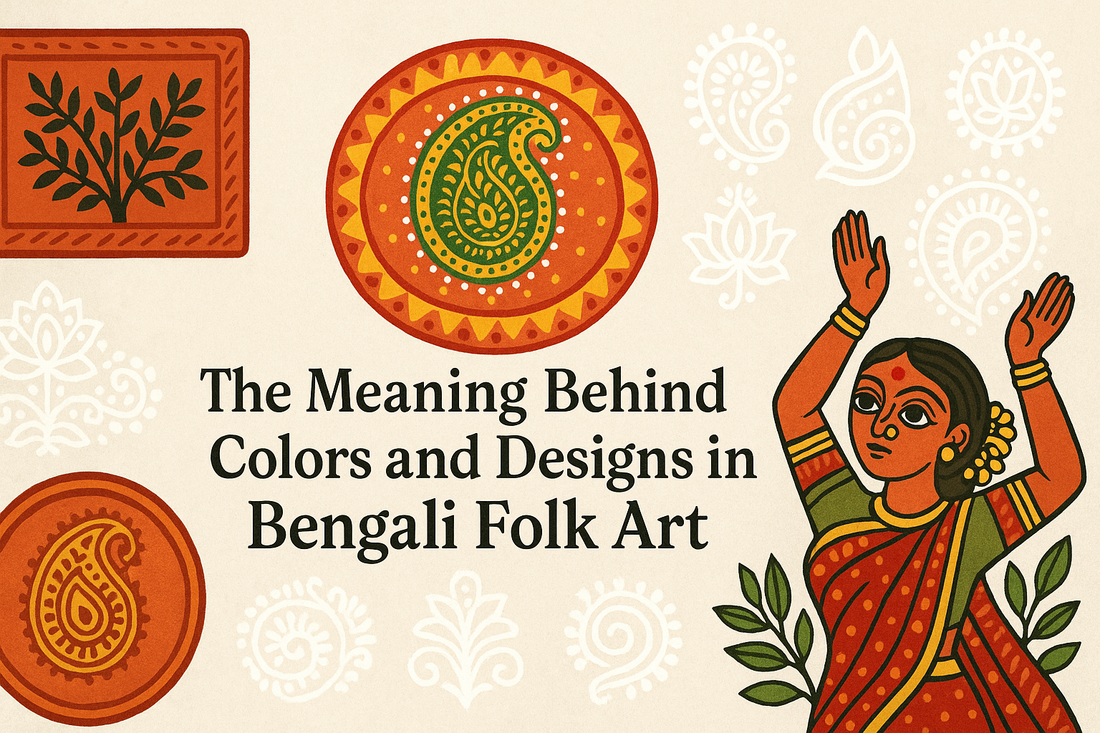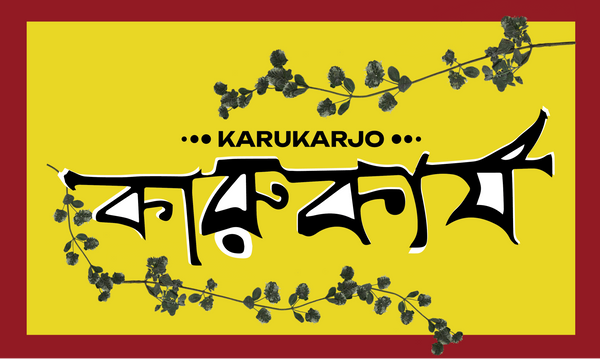
The Meaning Behind Colors and Designs in Bengali Folk Art
Introduction
Bengali folk art is a beautiful reflection of India's deep cultural heritage. From the vibrant Alpona designs drawn during festivals to the earthy tones of terracotta crafts, every color and pattern carries centuries of meaning and emotion.
In this blog, we explore the hidden symbolism behind the colors and designs in Bengali folk art, and how they continue to inspire modern art and craft products today.
The Cultural Significance of Colors in Bengali Folk Art
Colors in Bengali folk art are not chosen randomly. Each shade holds a special meaning, linked to emotions, spirituality, and daily life.
1. Red: The Color of Power and Celebration
- Symbolism: Red represents shakti (power), auspiciousness, and celebration.
- Usage: You will see red in Alpona designs, wedding decorations, and clay models.
- Fun Fact: Traditional Bengali brides wear red sarees to symbolize fertility and strength.
2. White: The Color of Purity and Peace
- Symbolism: White stands for purity, truth, and devotion.
- Usage: White rice paste is used to create intricate Alpona designs on floors during festivals like Lakshmi Puja.
3. Yellow: The Color of Prosperity and Divinity
- Symbolism: Yellow is associated with wealth, harvest, and the divine.
- Usage: Mustard yellow often appears in terracotta crafts and folk paintings, celebrating the rural life of Bengal.
4. Green: The Color of Nature and New Beginnings
- Symbolism: Green symbolizes fertility, growth, and new beginnings.
- Usage: In folk art, green often highlights nature scenes, trees, and the beauty of Bengal's villages.
5. Black: The Color of Protection
- Symbolism: Black is used to ward off evil spirits.
- Usage: Traditional masks and some Patachitra paintings use black outlines to protect the artwork and its owner from negative energies.
The Symbolism of Designs and Patterns in Bengali Folk Art
Just like colors, designs have deep-rooted meanings in Bengali tradition.
1. Kalka Motif (Paisley Design)
- Meaning: Represents fertility, growth, and the cycle of life.
- Usage: The Kalka motif is a classic in Bengali art and can often be seen on painted plates (matir thala) and textiles.
2. Alpona (Sacred Floor Art)
- Meaning: Invokes blessings for prosperity, good fortune, and protection.
- Usage: Drawn with rice paste during religious ceremonies, Alpona designs feature lotuses, fish, conch shells, and more.
3. Terracotta Craft Patterns
- Meaning: Reflects earthy life, simplicity, and connection to nature.
- Usage: Figures of animals, trees, and village life are carved onto terracotta panels and pots, keeping rural Bengal alive.
4. Patachitra (Scroll Painting) Themes
- Meaning: Storytelling through visuals — from myths like Manasa Mangal to everyday rural stories.
- Usage: Every scroll painting narrates a tale passed down over generations.
How These Ancient Meanings Inspire Today's Handcrafted Products
Today, when you buy handmade Bengali crafts, you are not just buying a decor piece — you are becoming part of a legacy.
At [Your Website Name], we proudly offer products like:
- Matir Thala with traditional Kalka art
- Hand-painted Alpona Wall Plates
- Terracotta Home Decor Pieces
Each piece carries with it the spirit of Bengali culture, the blessing of tradition, and the soul of an artist.
Why You Should Choose Bengali Folk Art for Your Home
- Bring positivity and prosperity into your space.
- Support local artisans and keep traditions alive.
- Own a piece of living history that makes your home unique and meaningful.
Explore our exclusive collection of handcrafted Bengali art — [Shop Now].
Conclusion
The colors and designs in Bengali folk art are not just visually stunning — they are a deep expression of India's soul.
By choosing these timeless pieces, you invite tradition, positivity, and rich stories into your life.
Celebrate culture, honor tradition, and beautify your home with authentic Bengali art!
